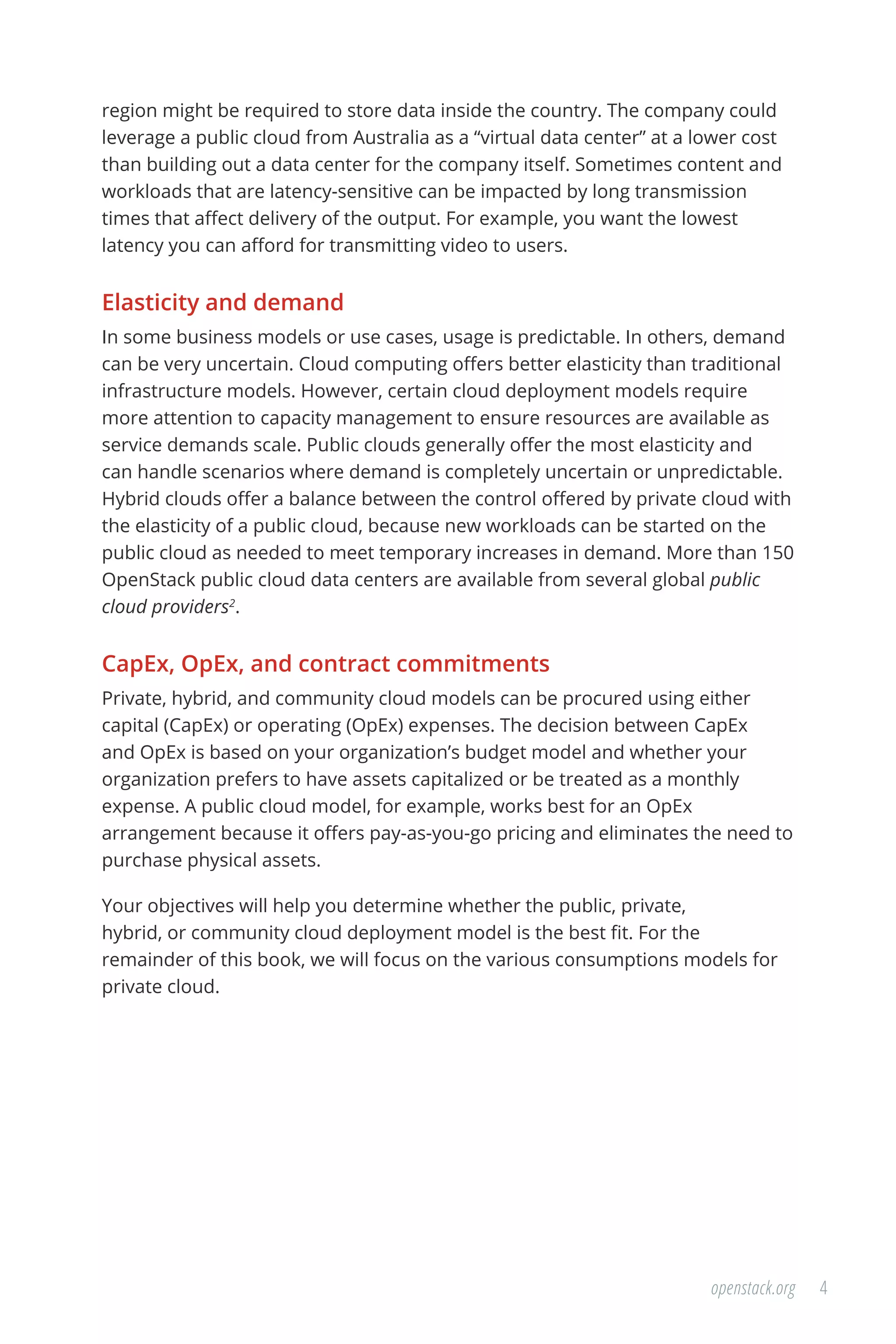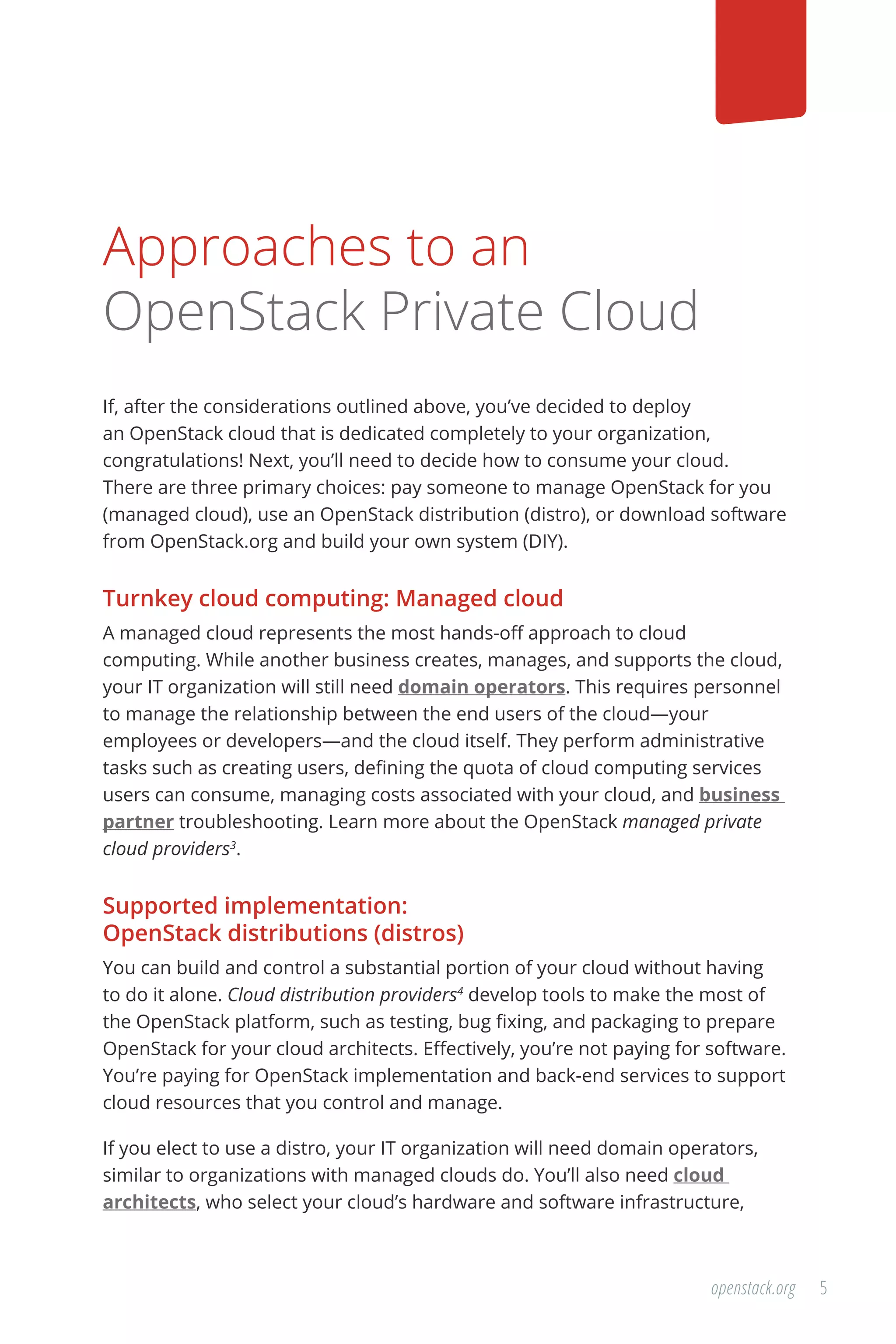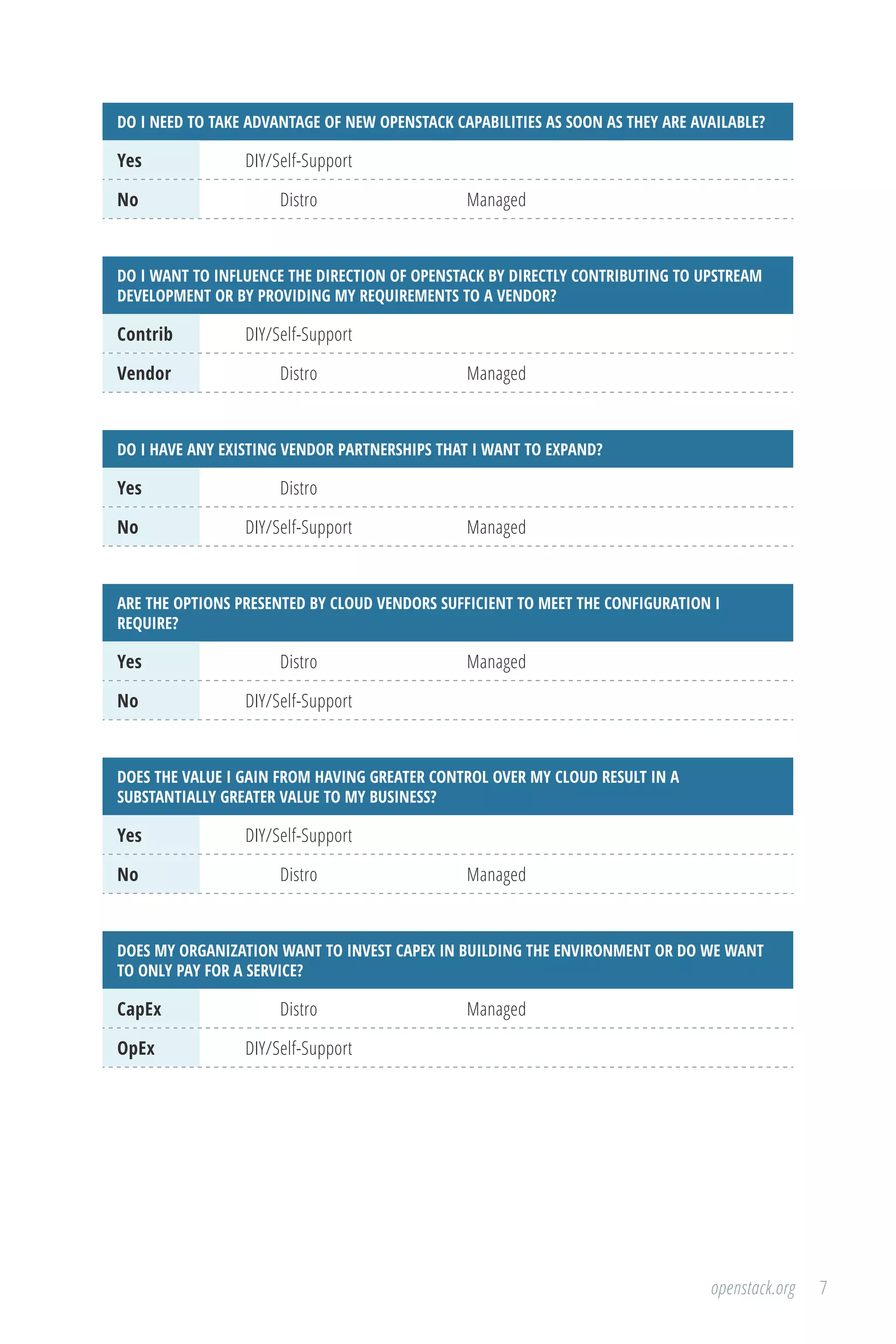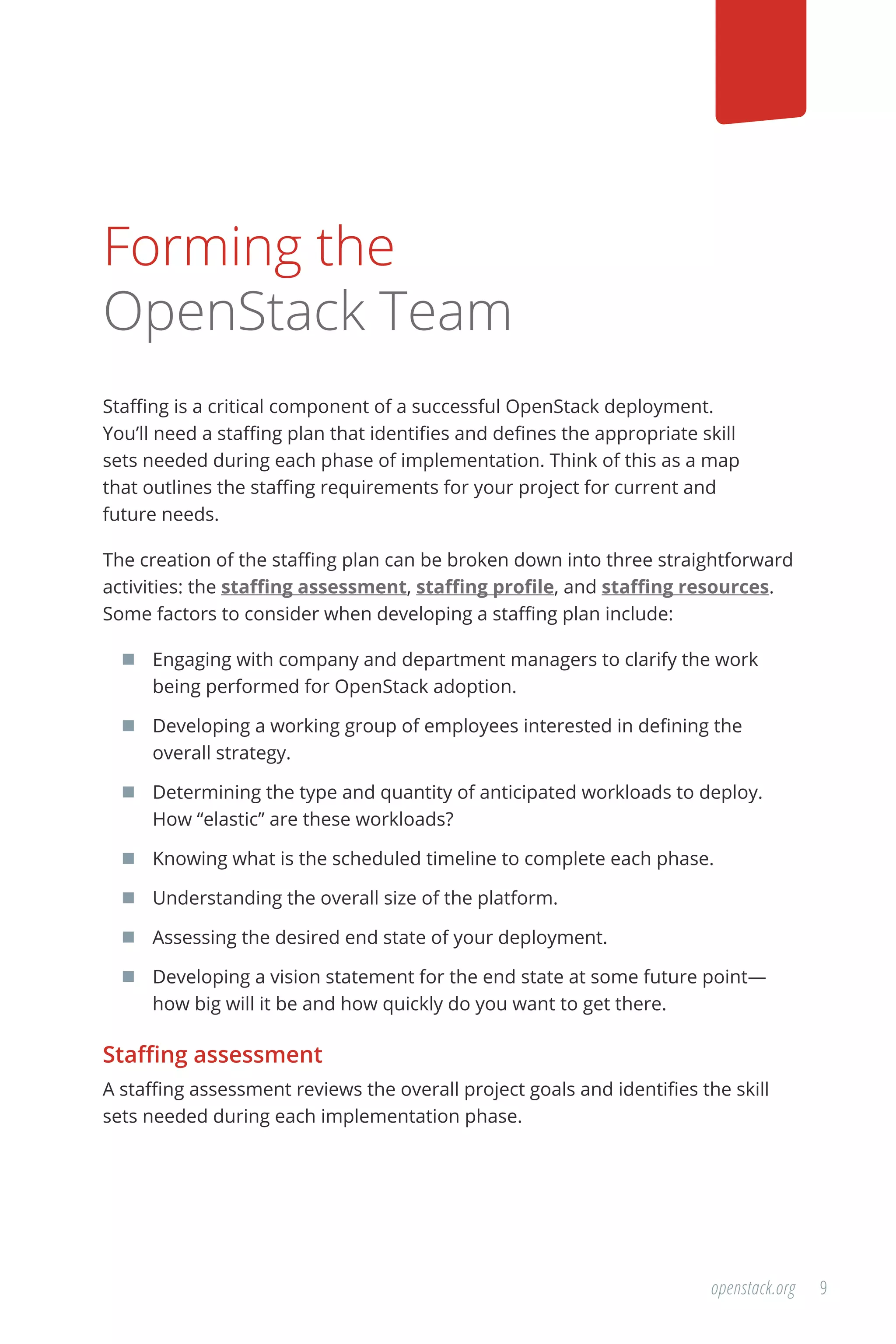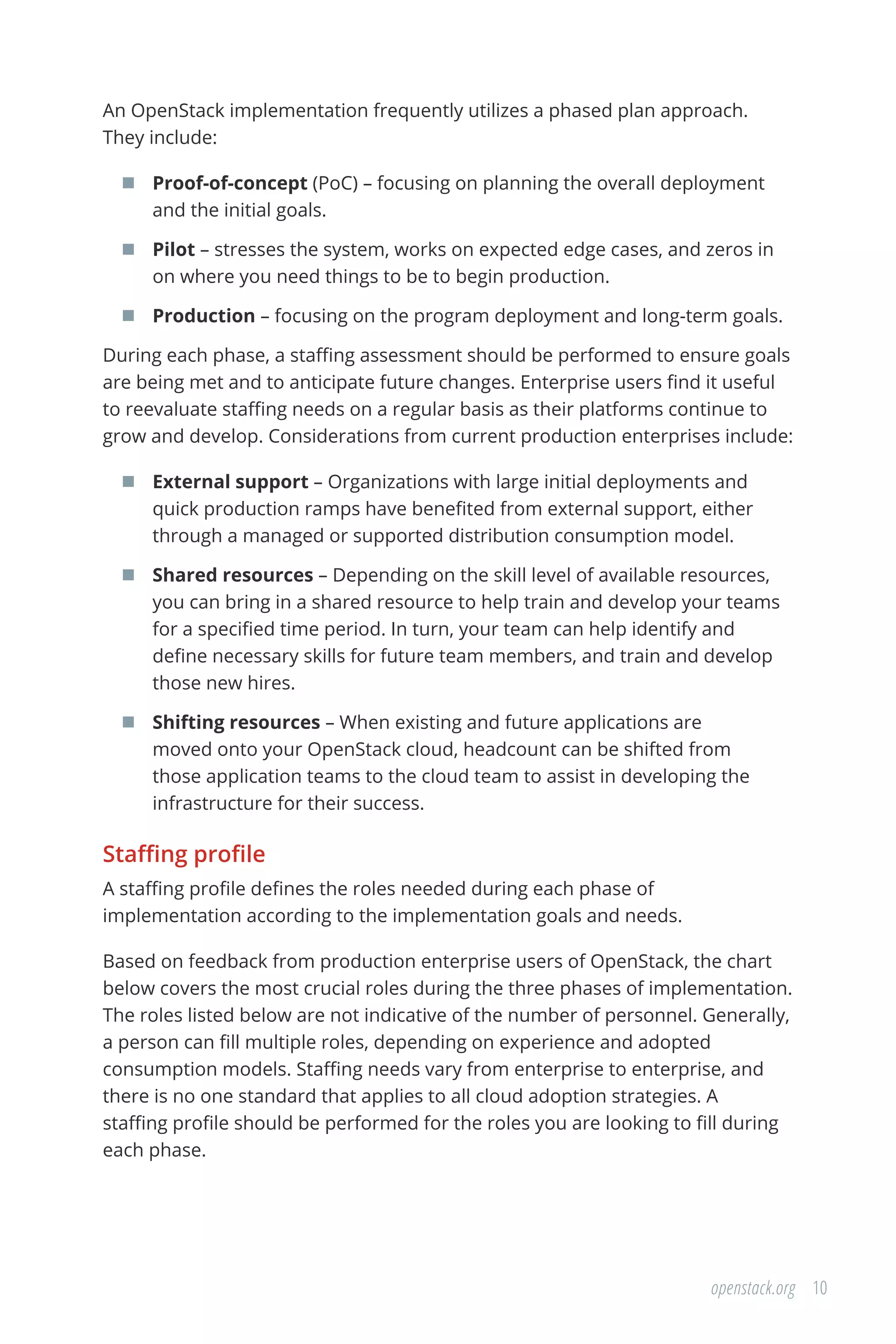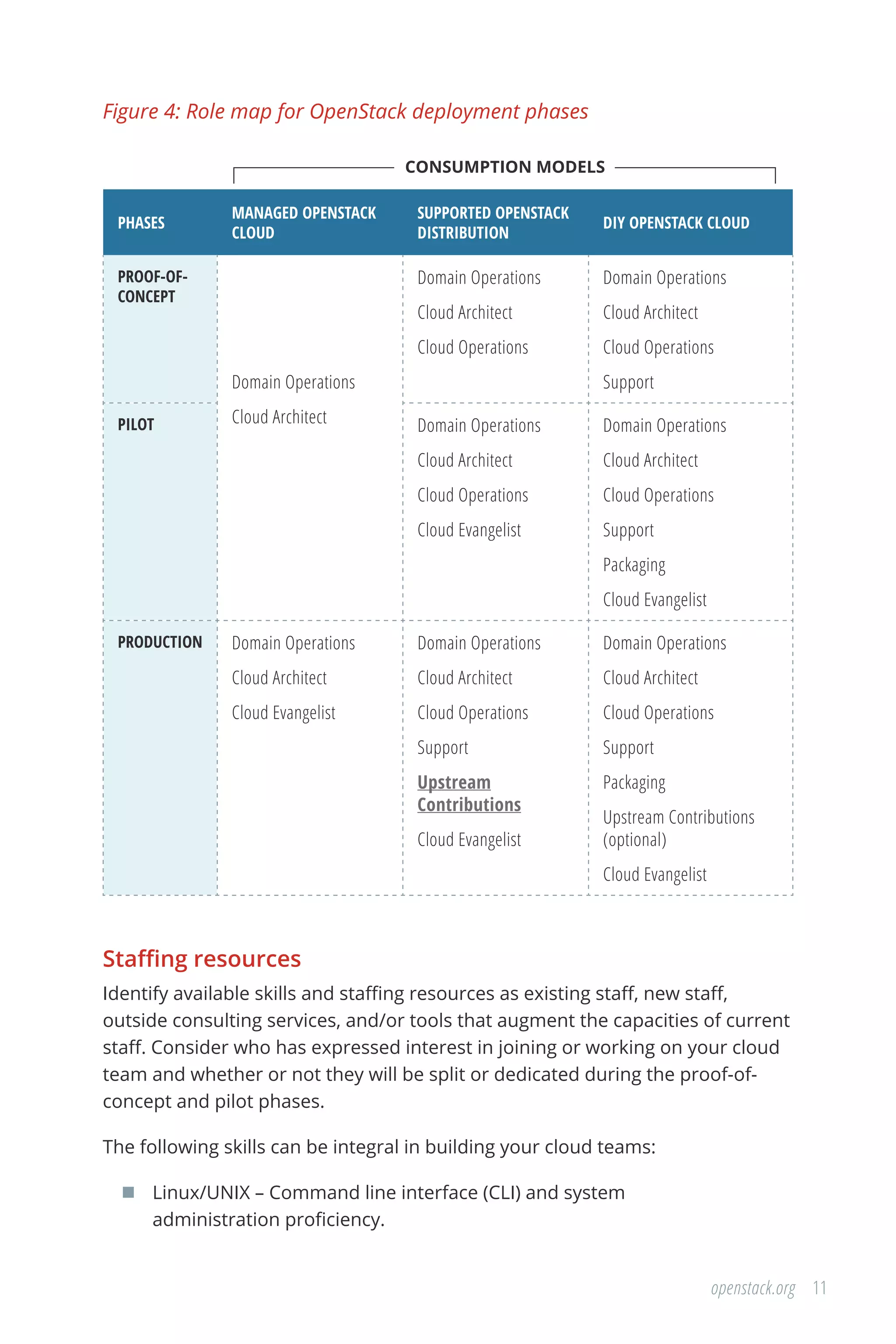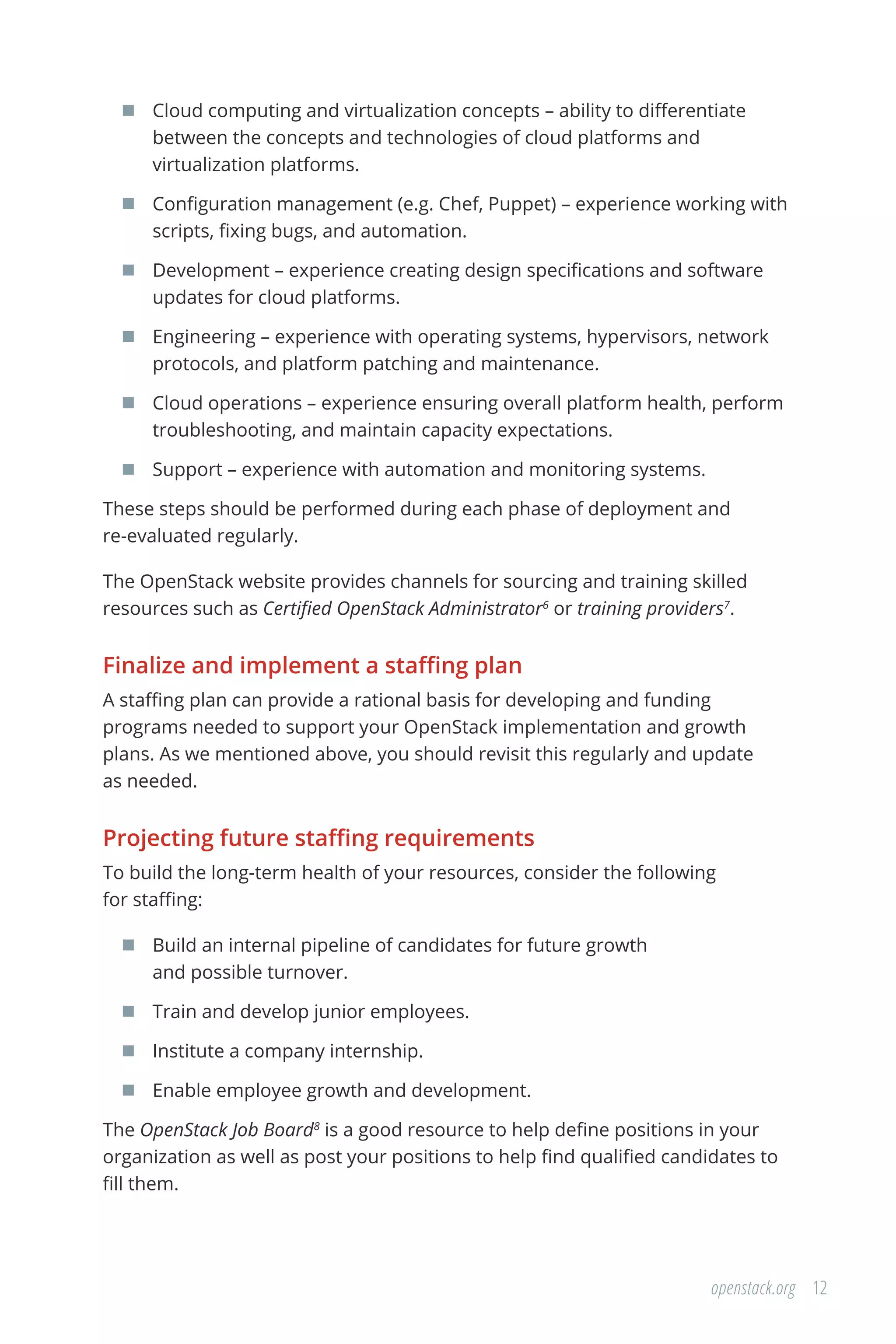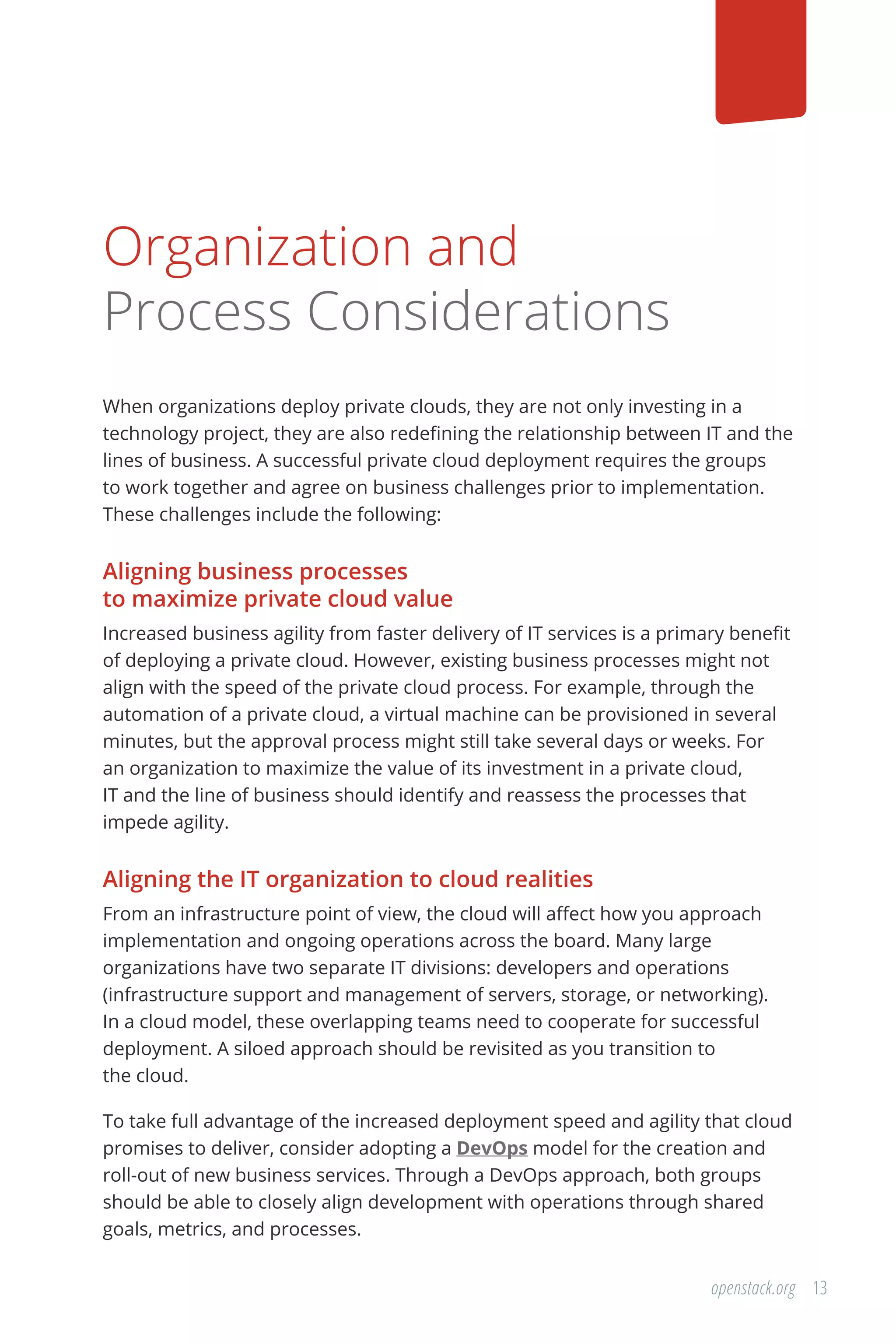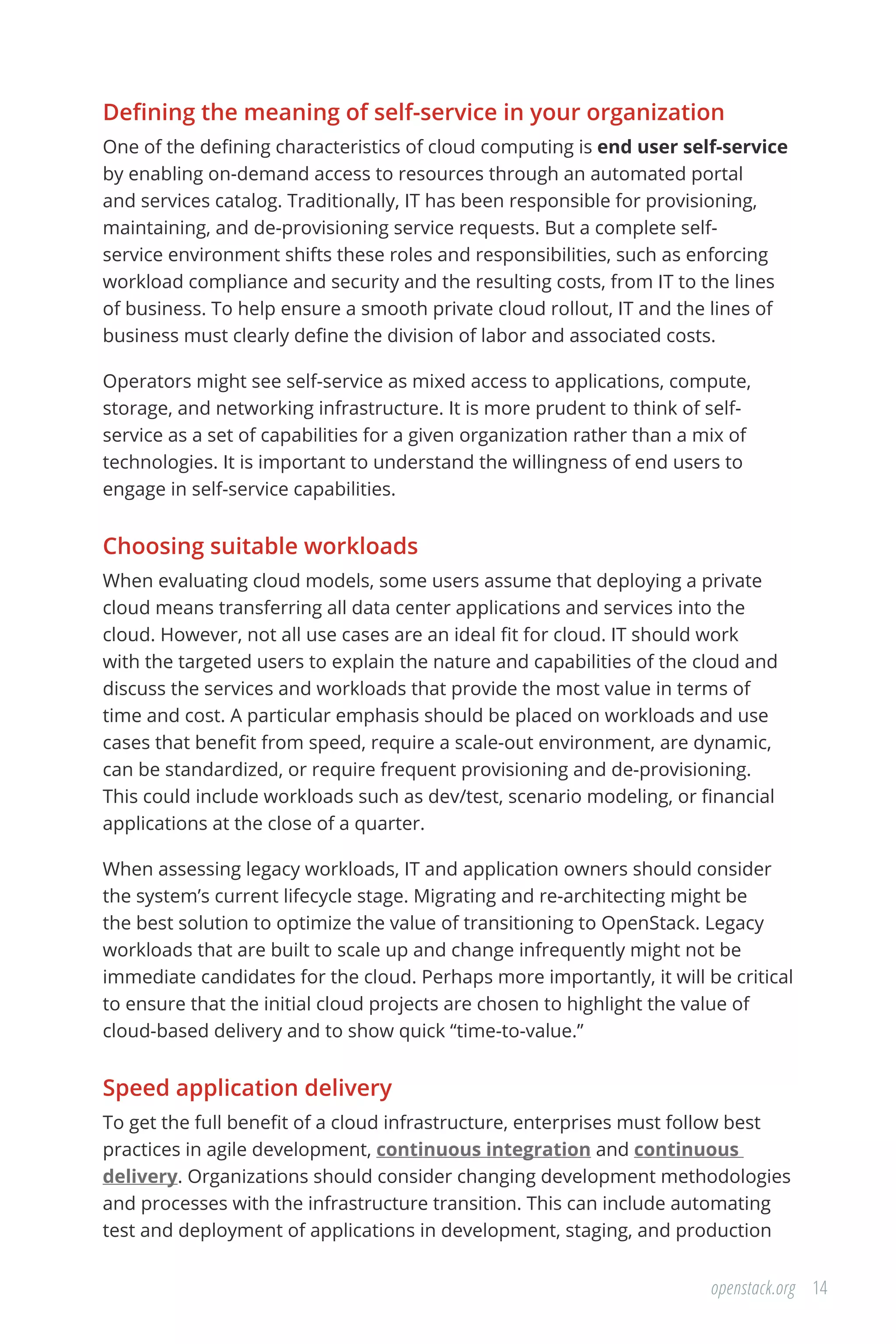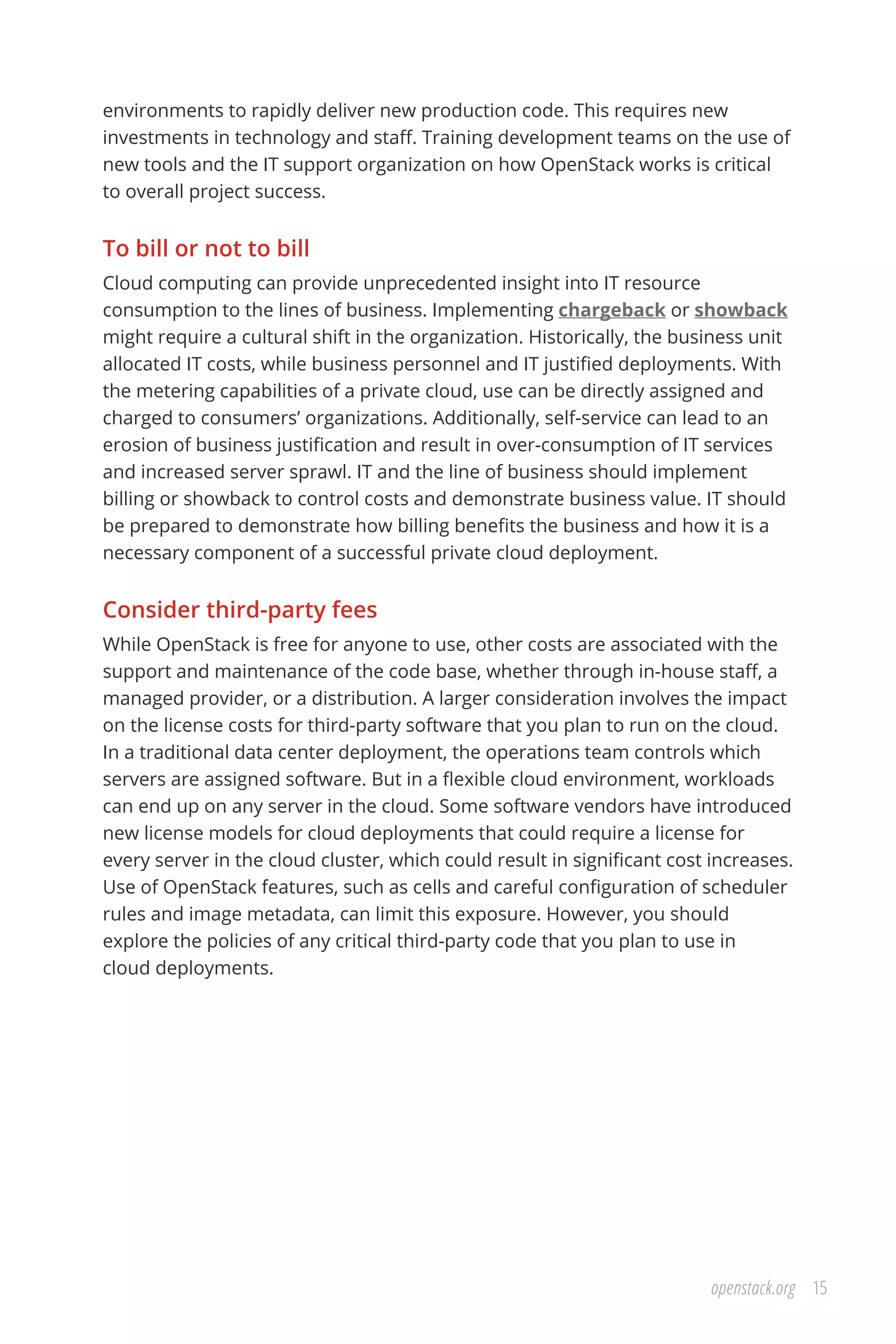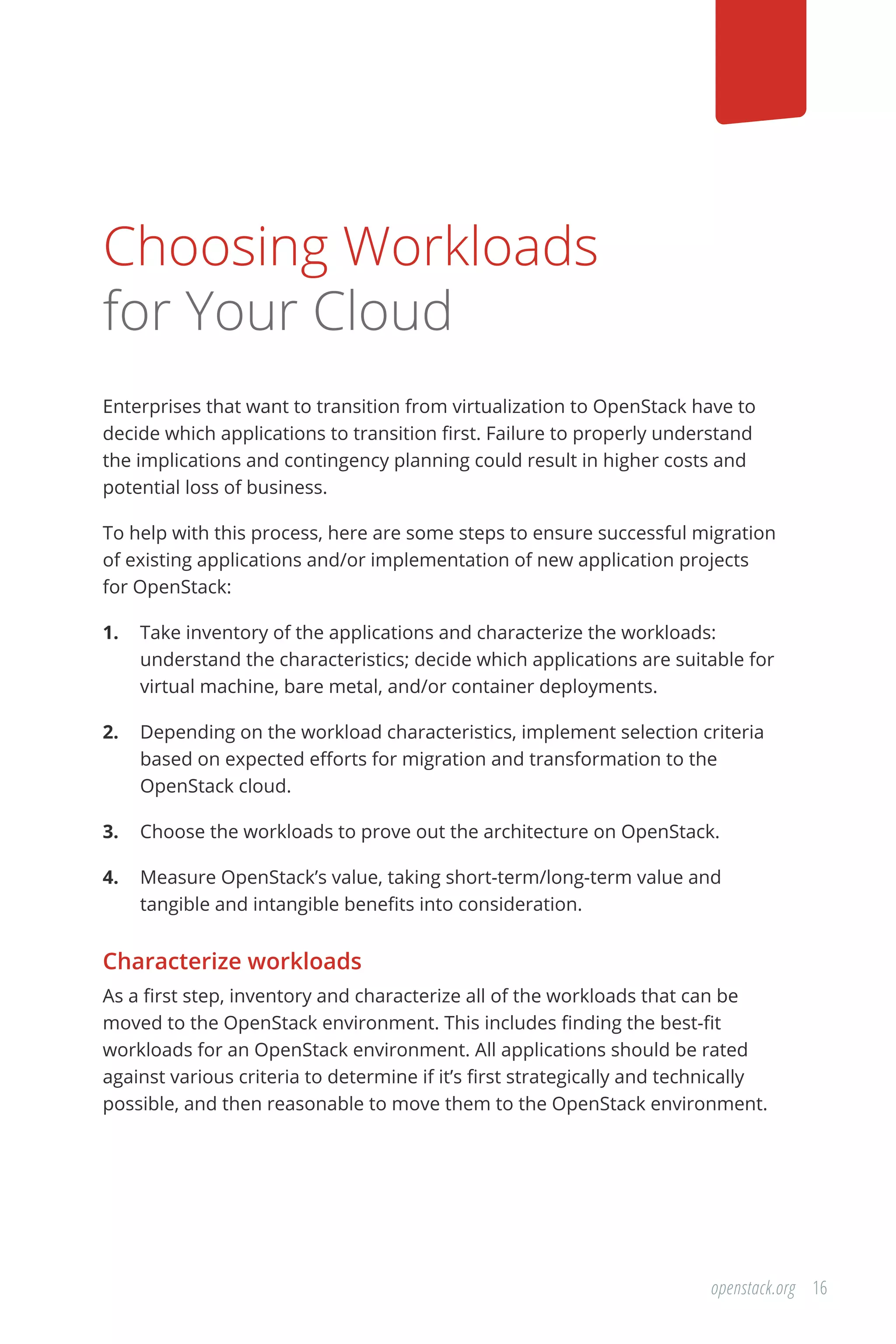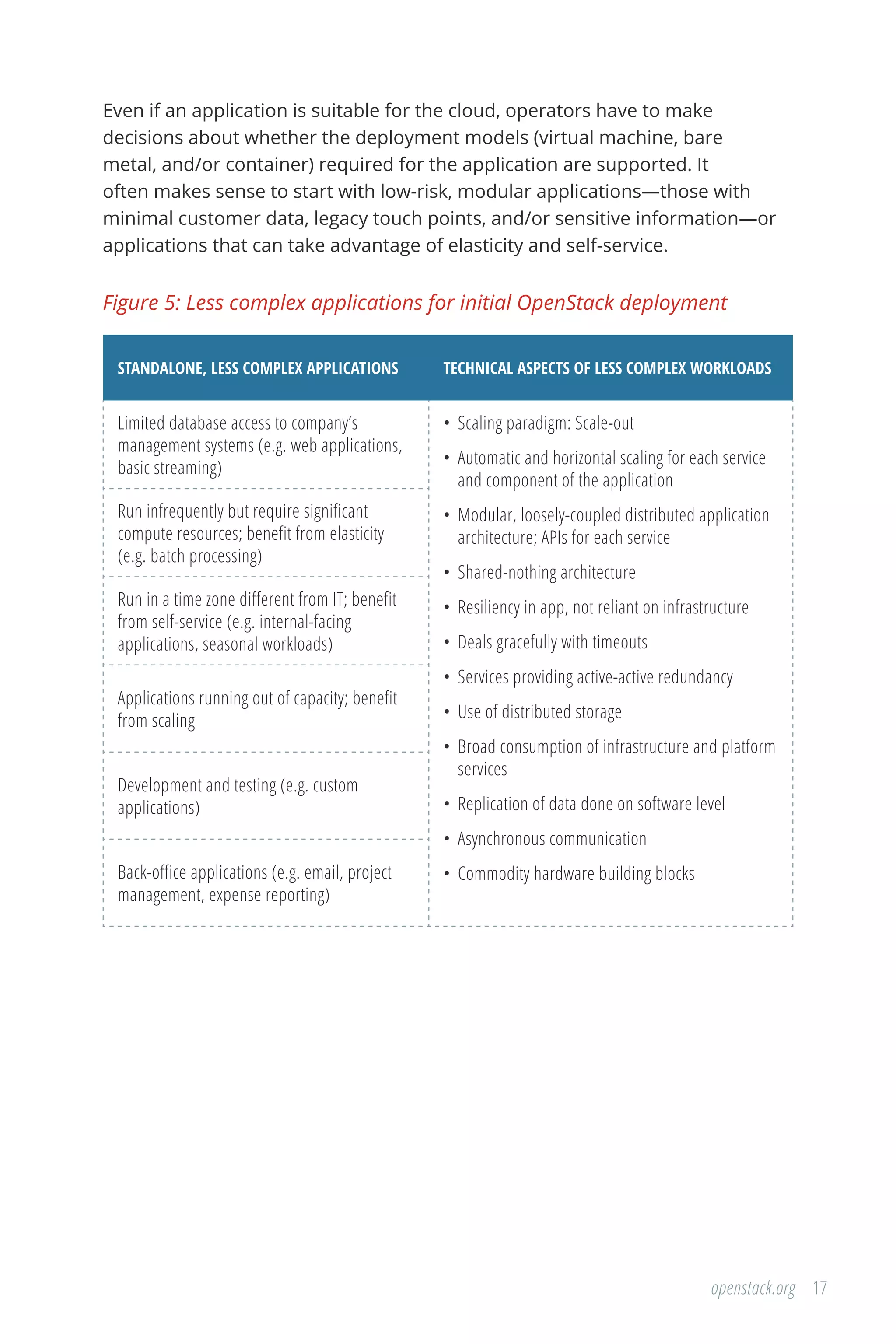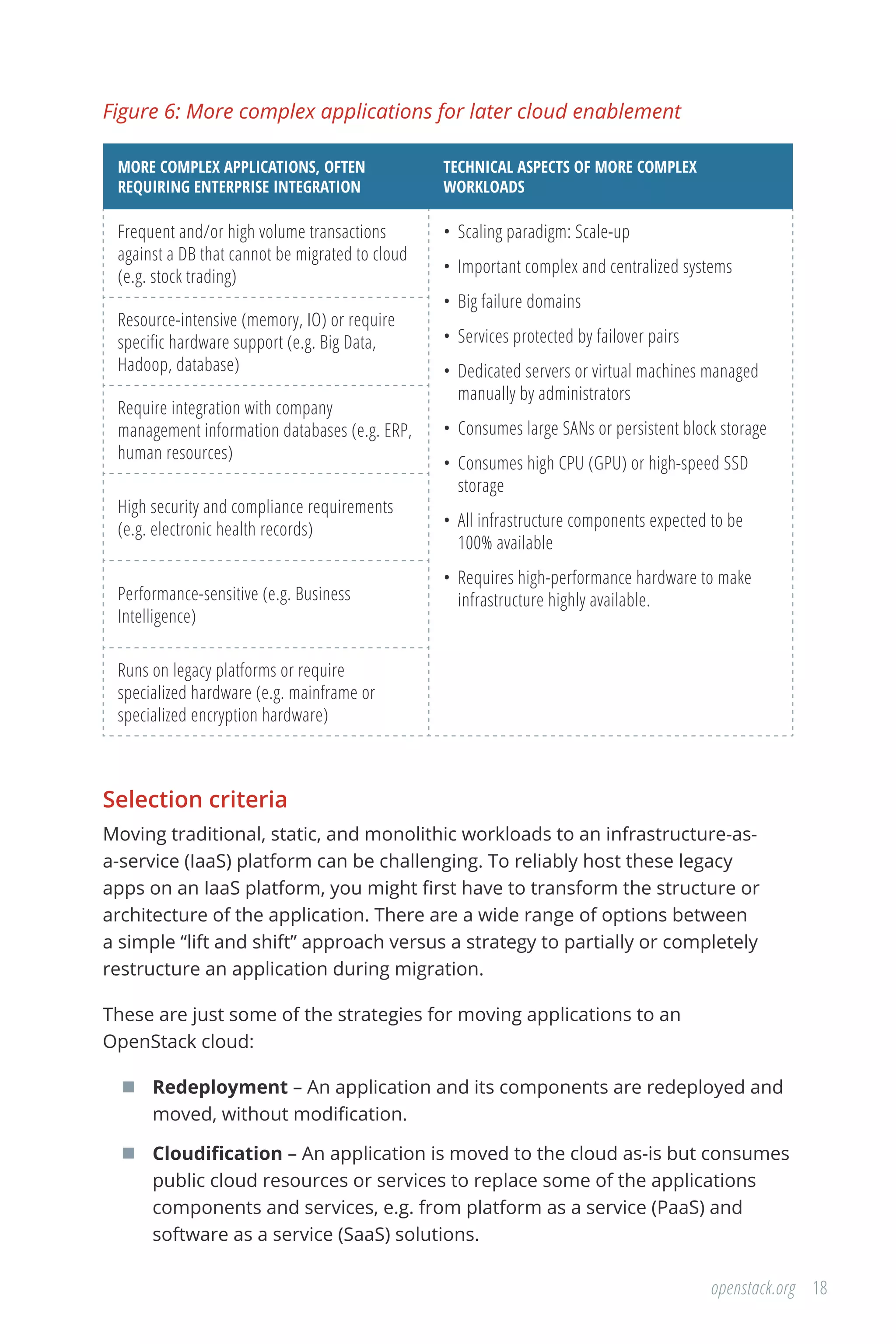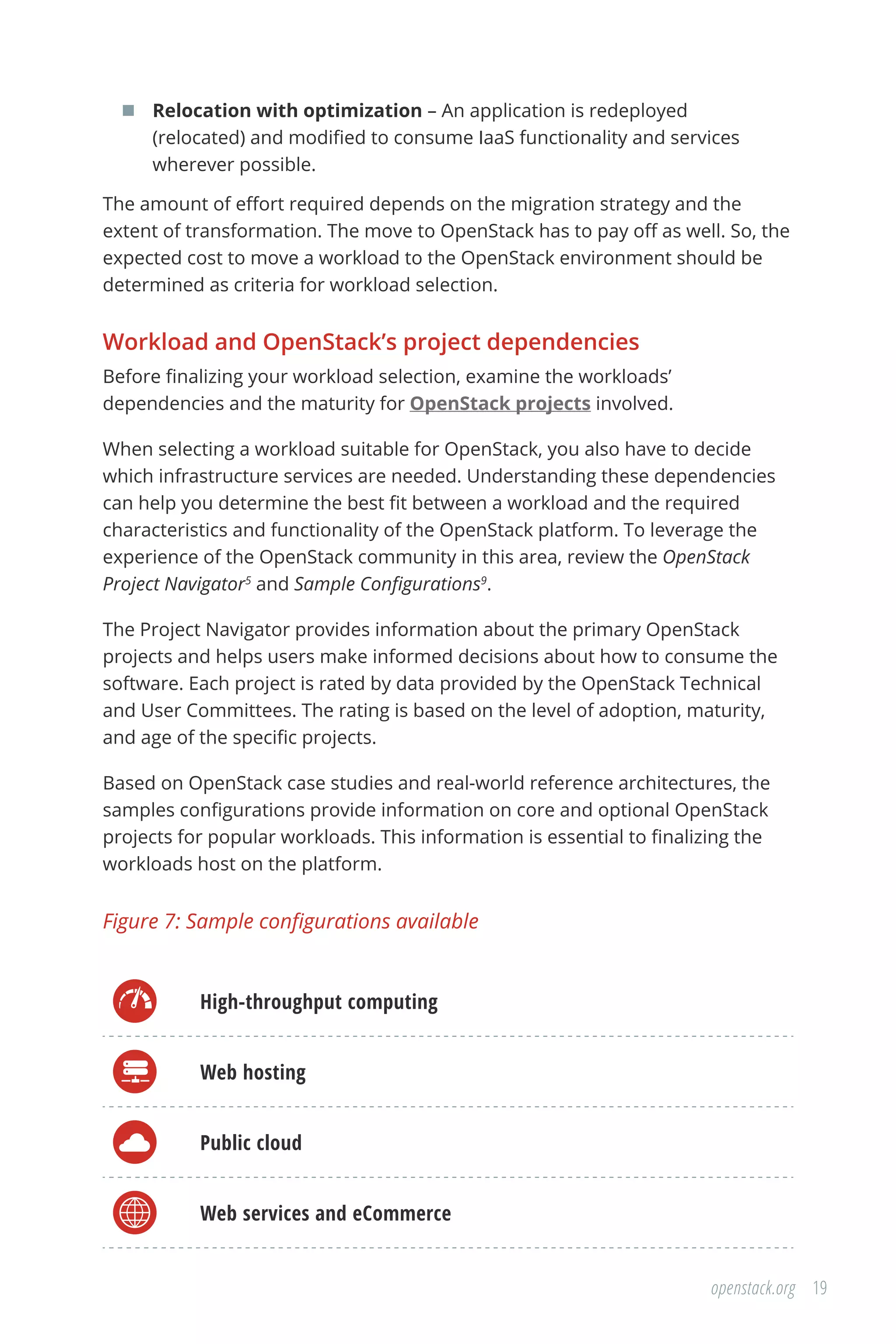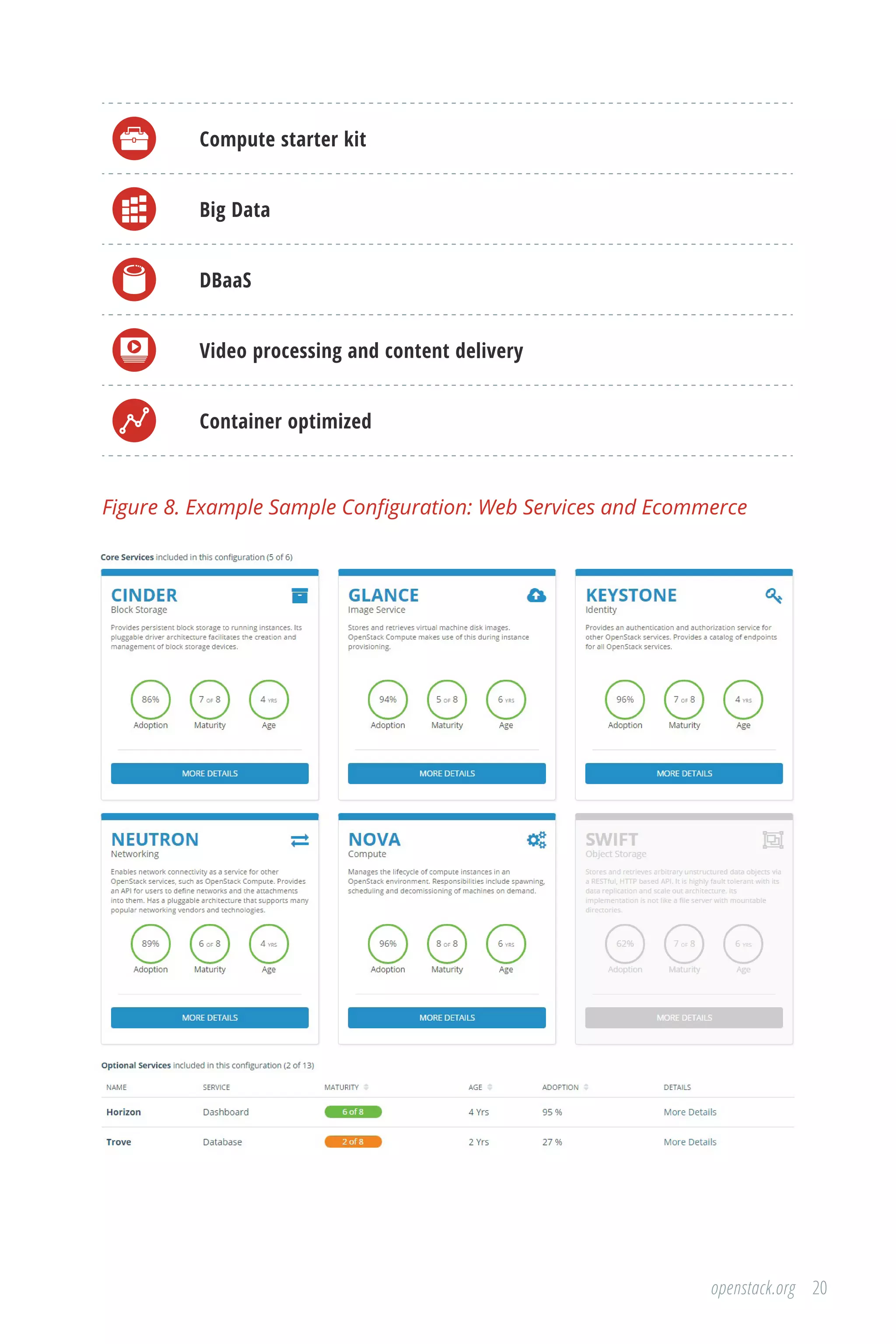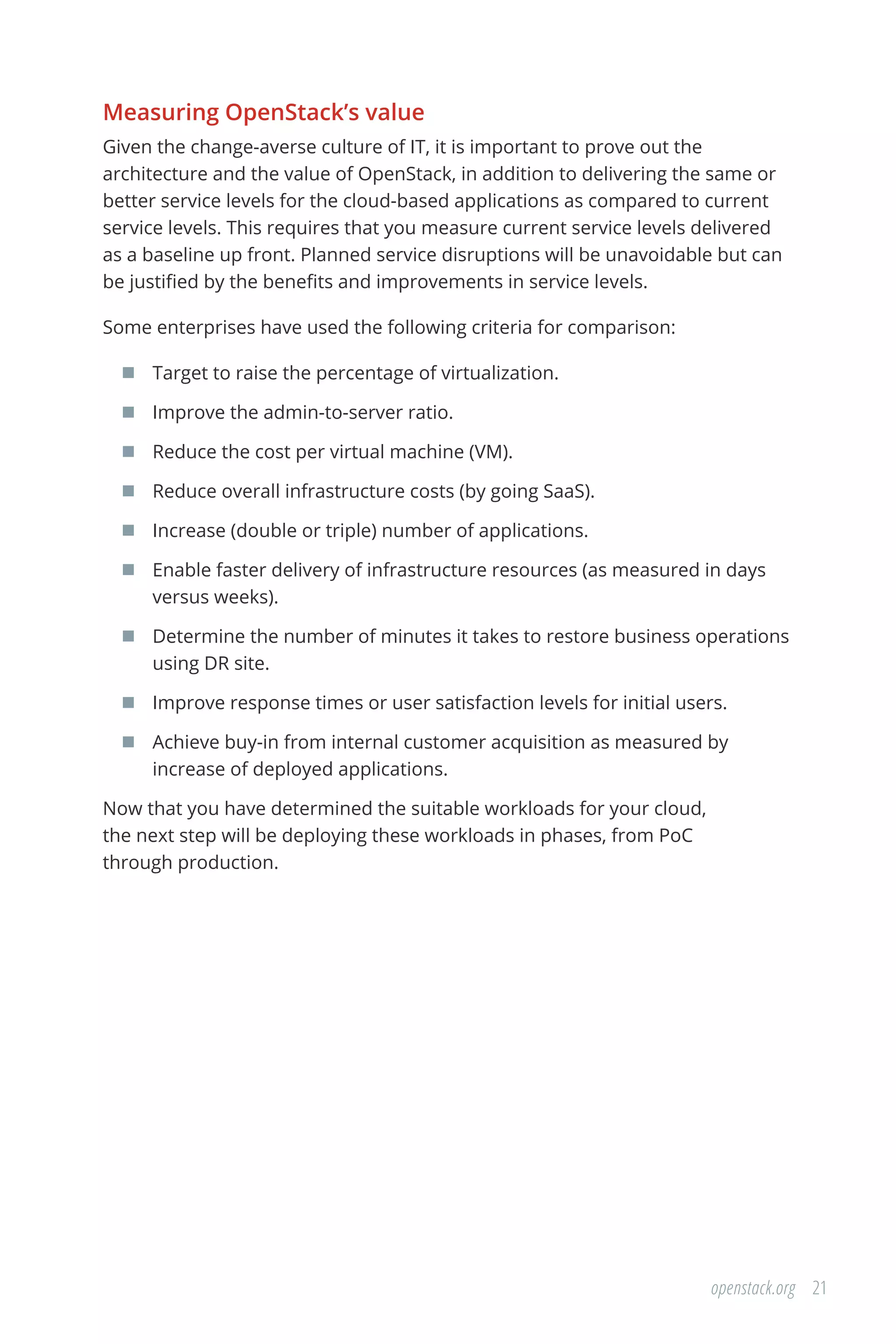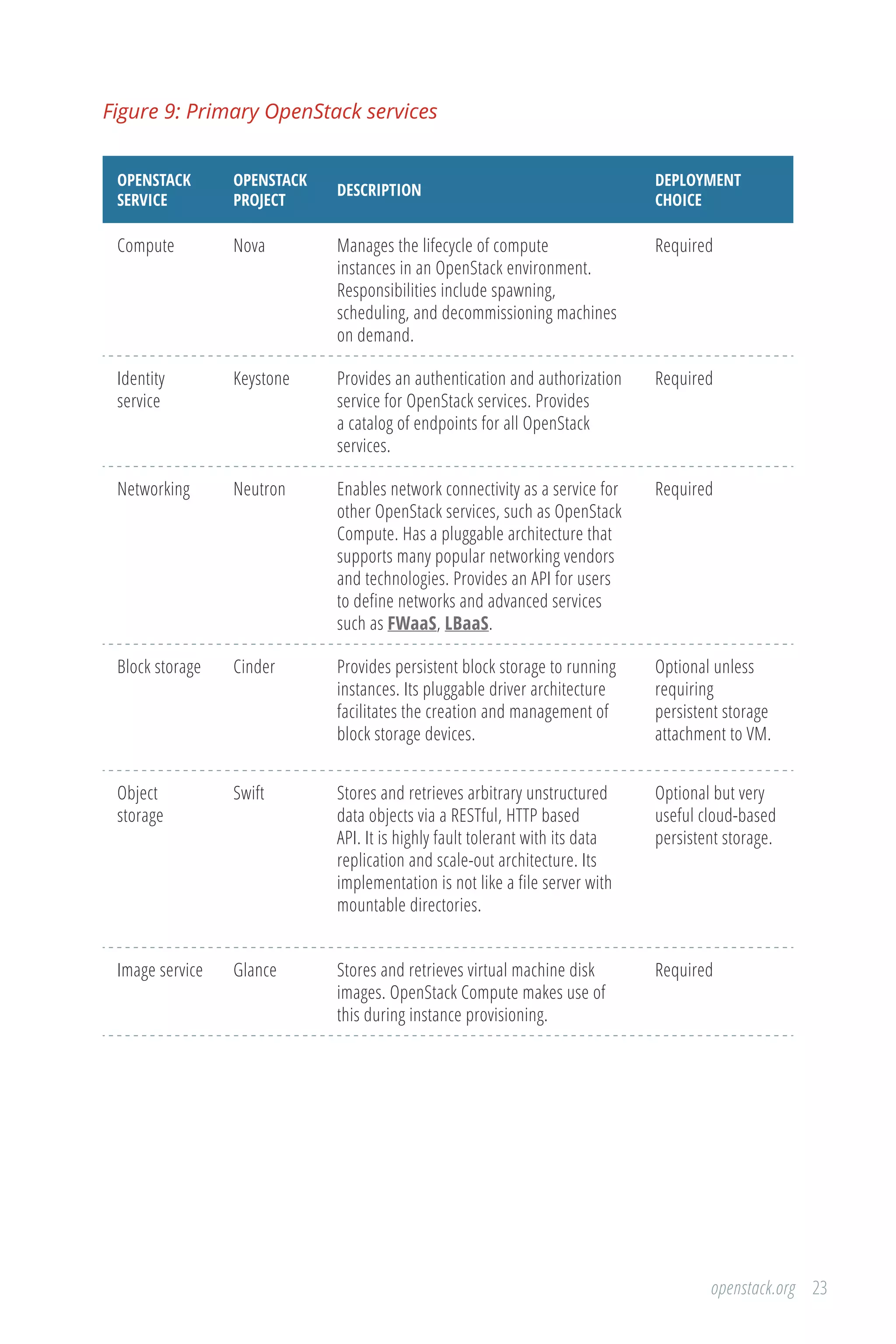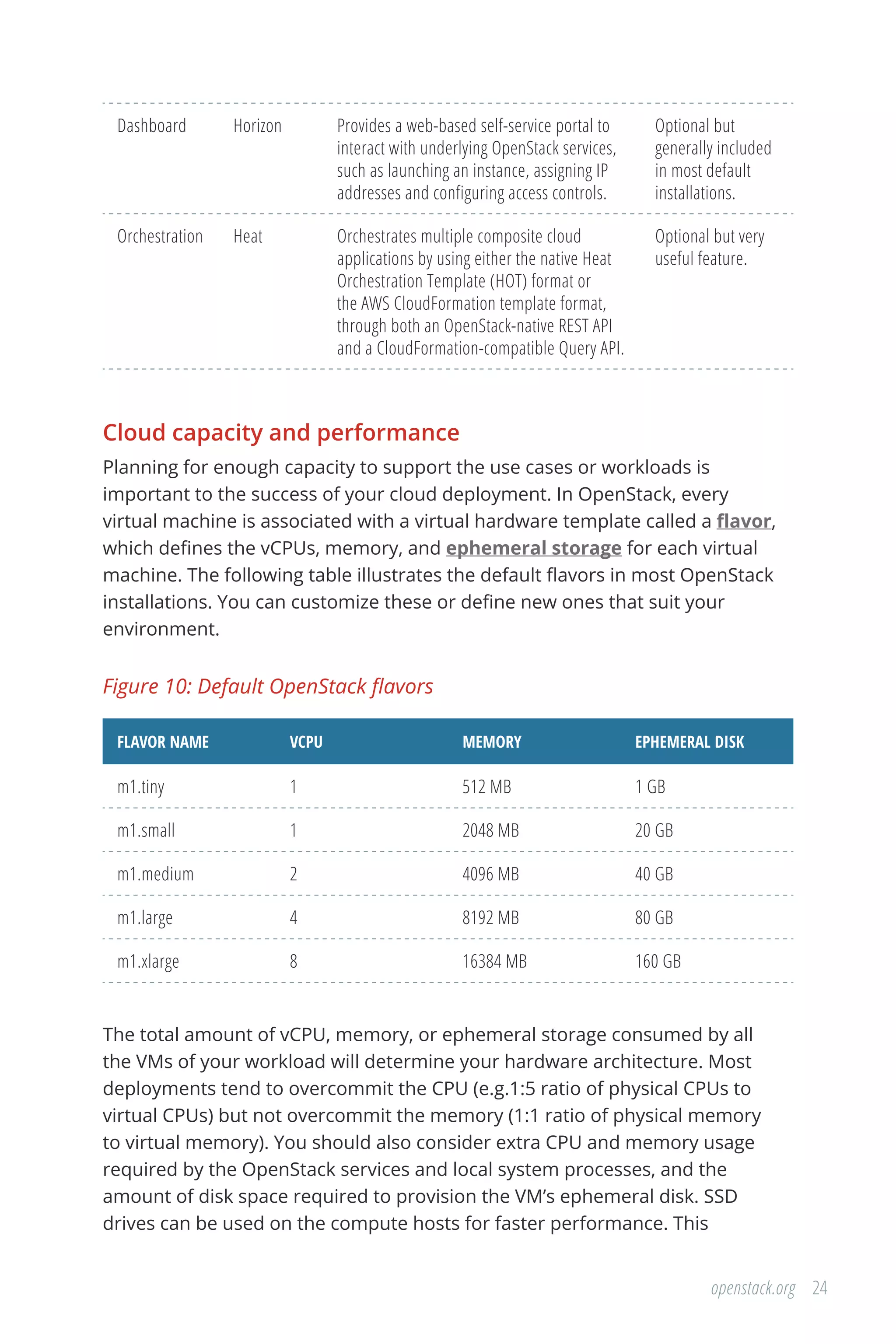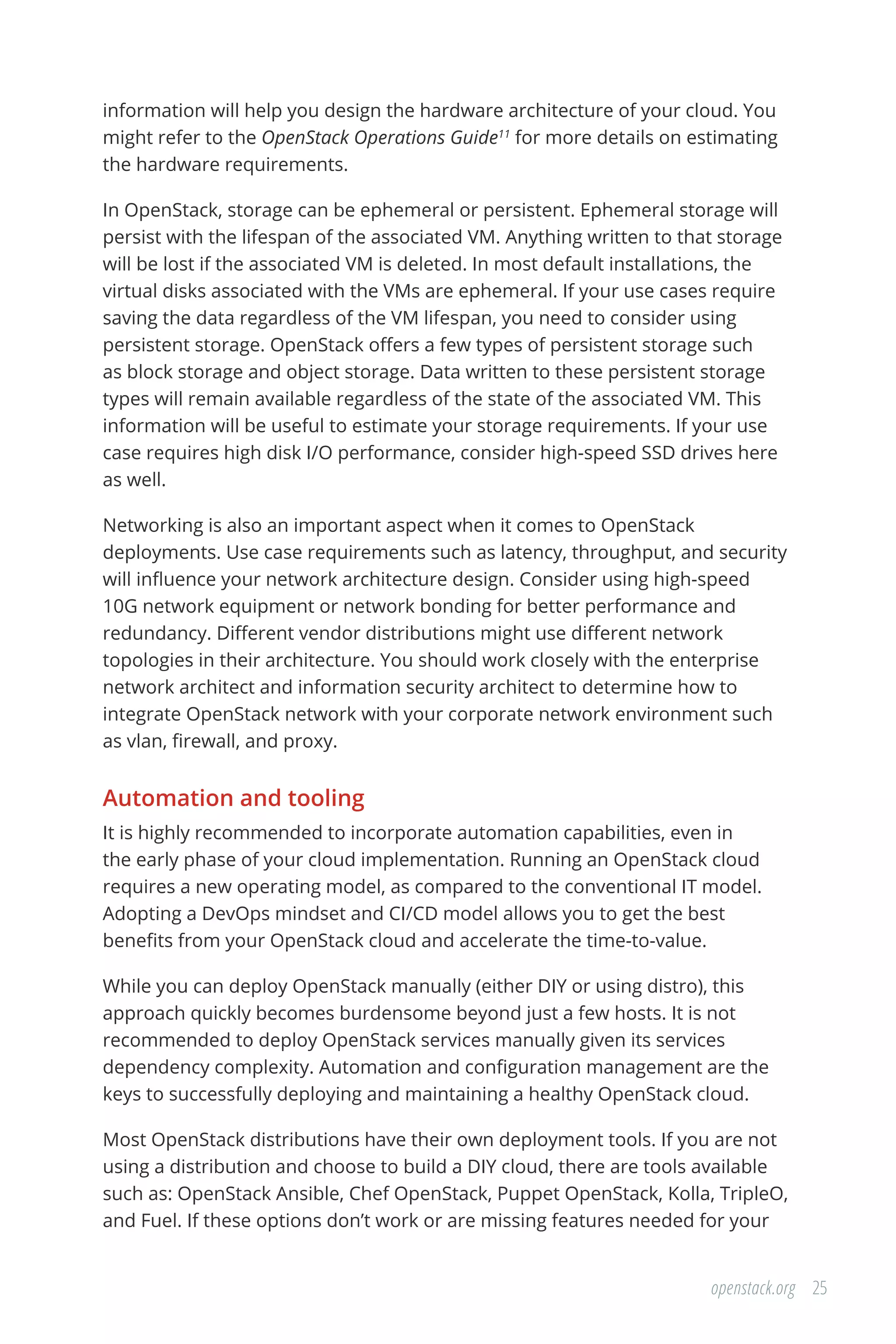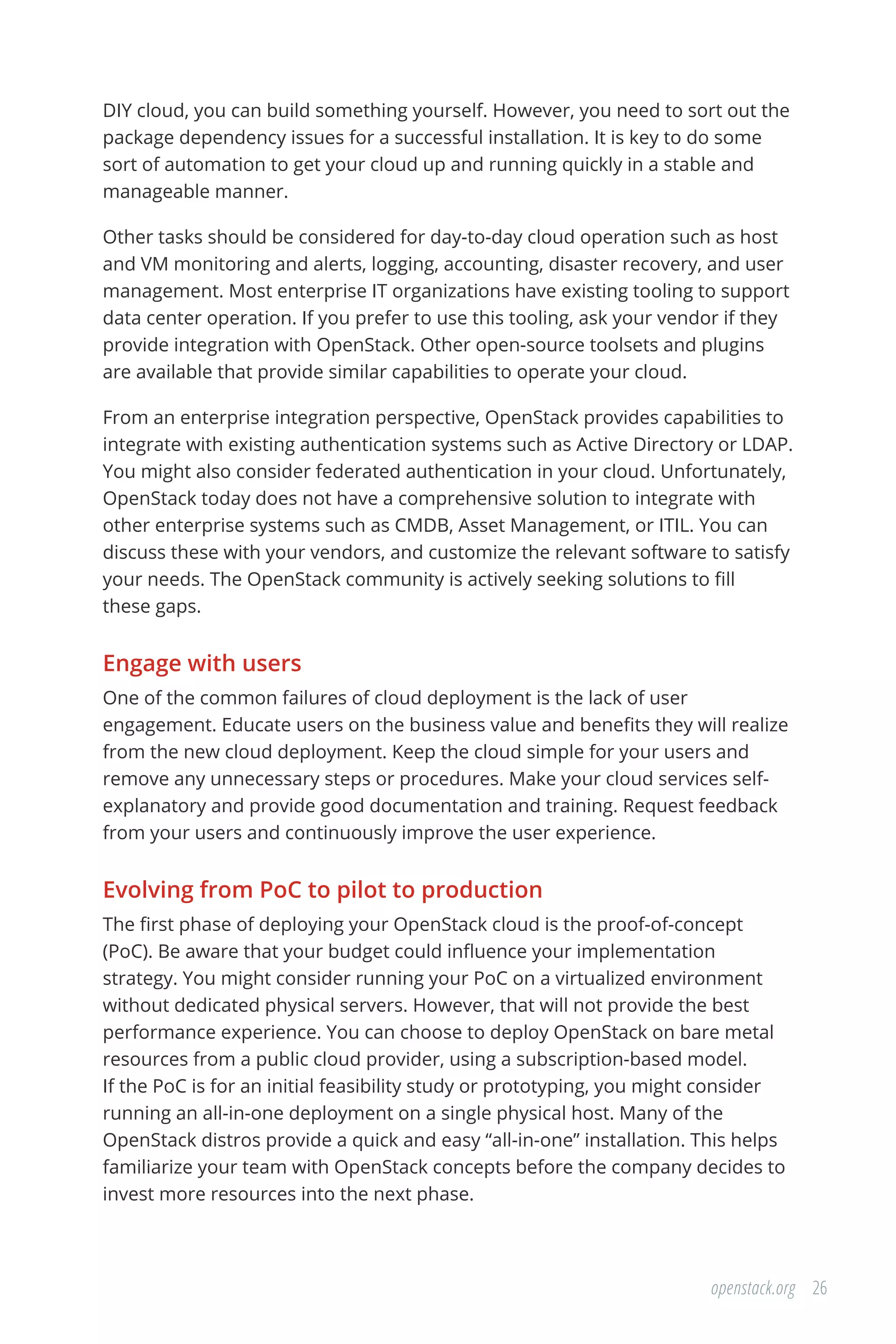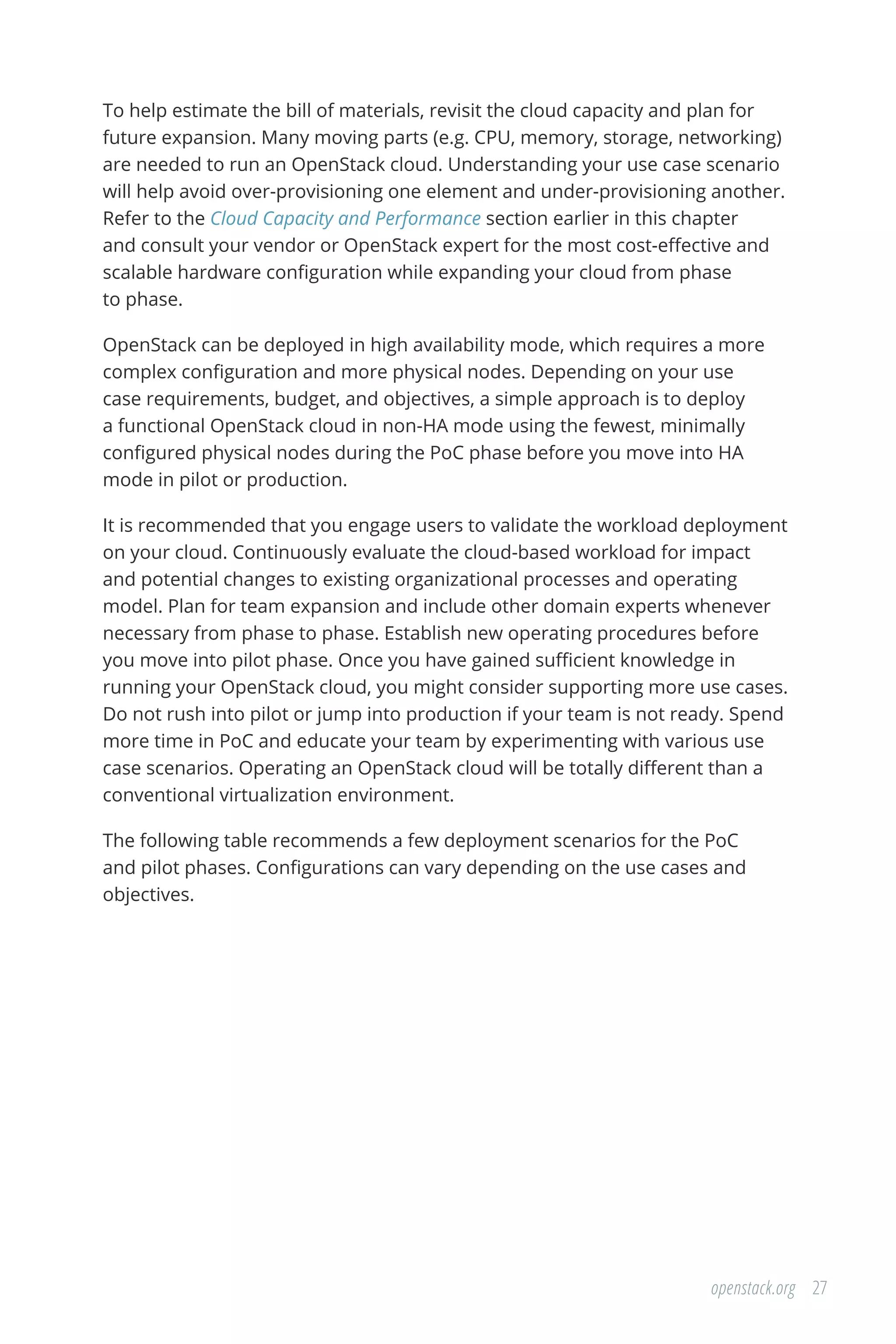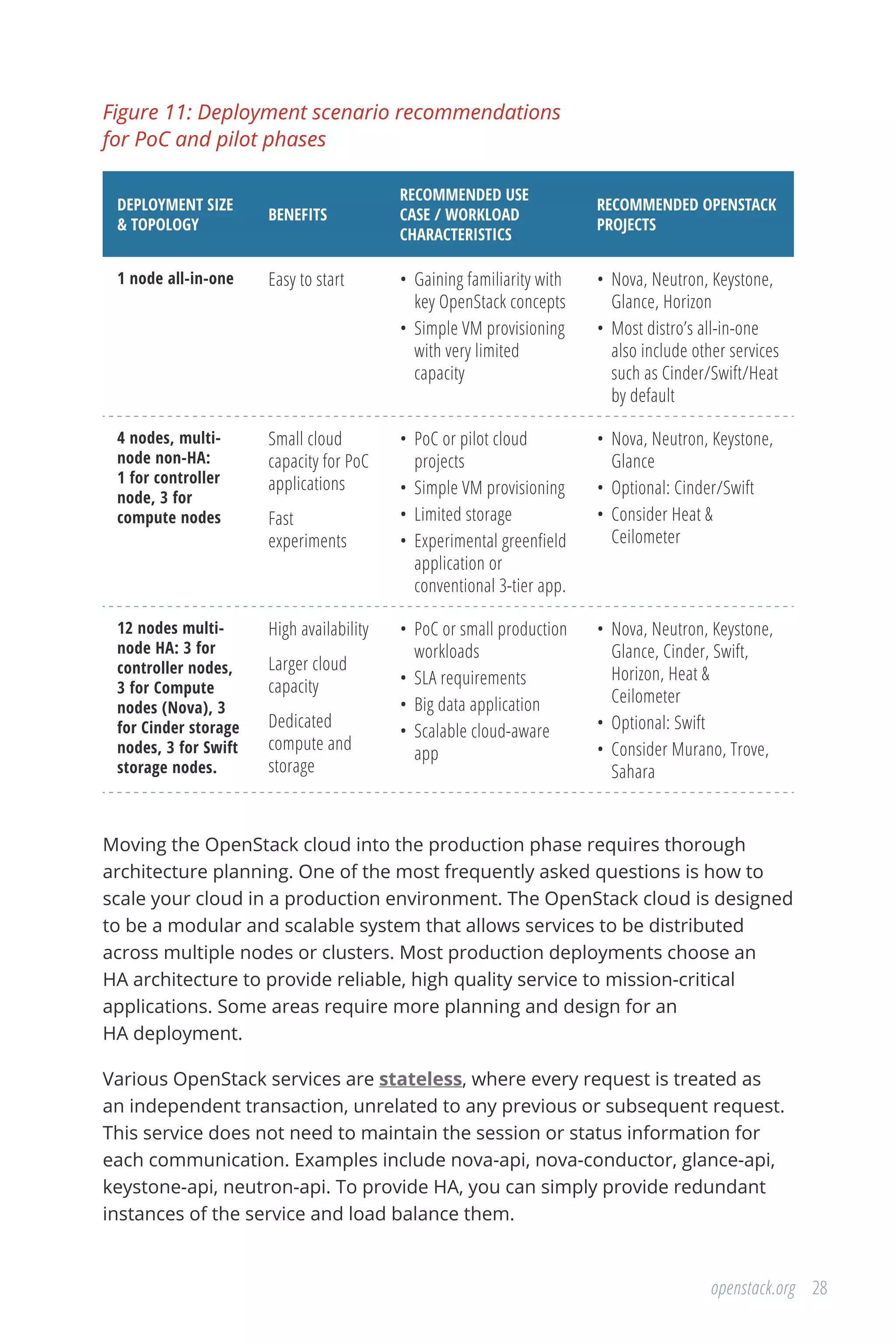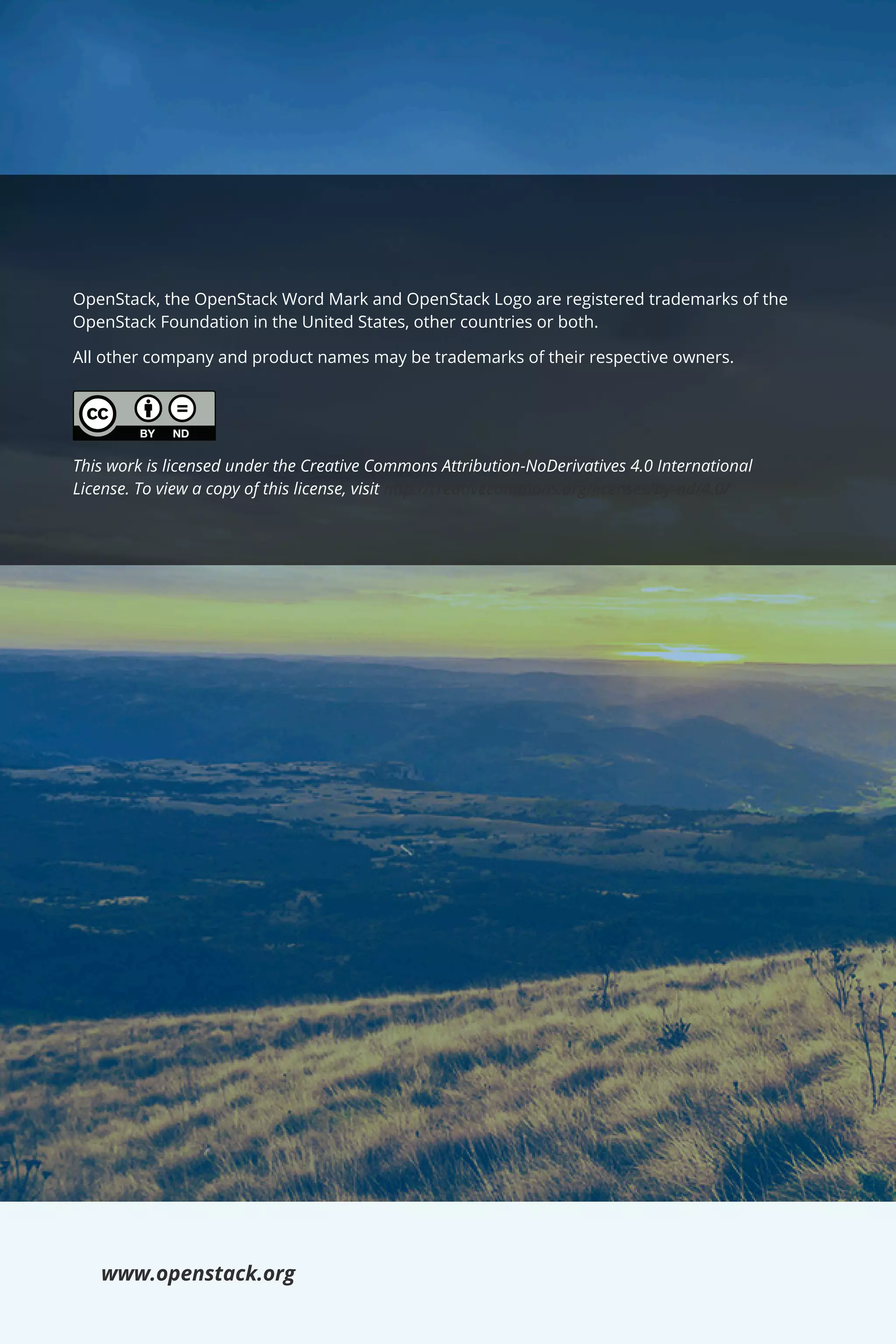The document outlines a guide for enterprises adopting OpenStack cloud technology, addressing strategic considerations for deployment models, staffing, and implementation. It emphasizes the importance of compliance needs, financial resources, and geographical requirements in choosing between private, public, hybrid, and community cloud models. The book provides insights on forming an OpenStack team, planning for resources, and operational practices to enhance cloud deployment success.
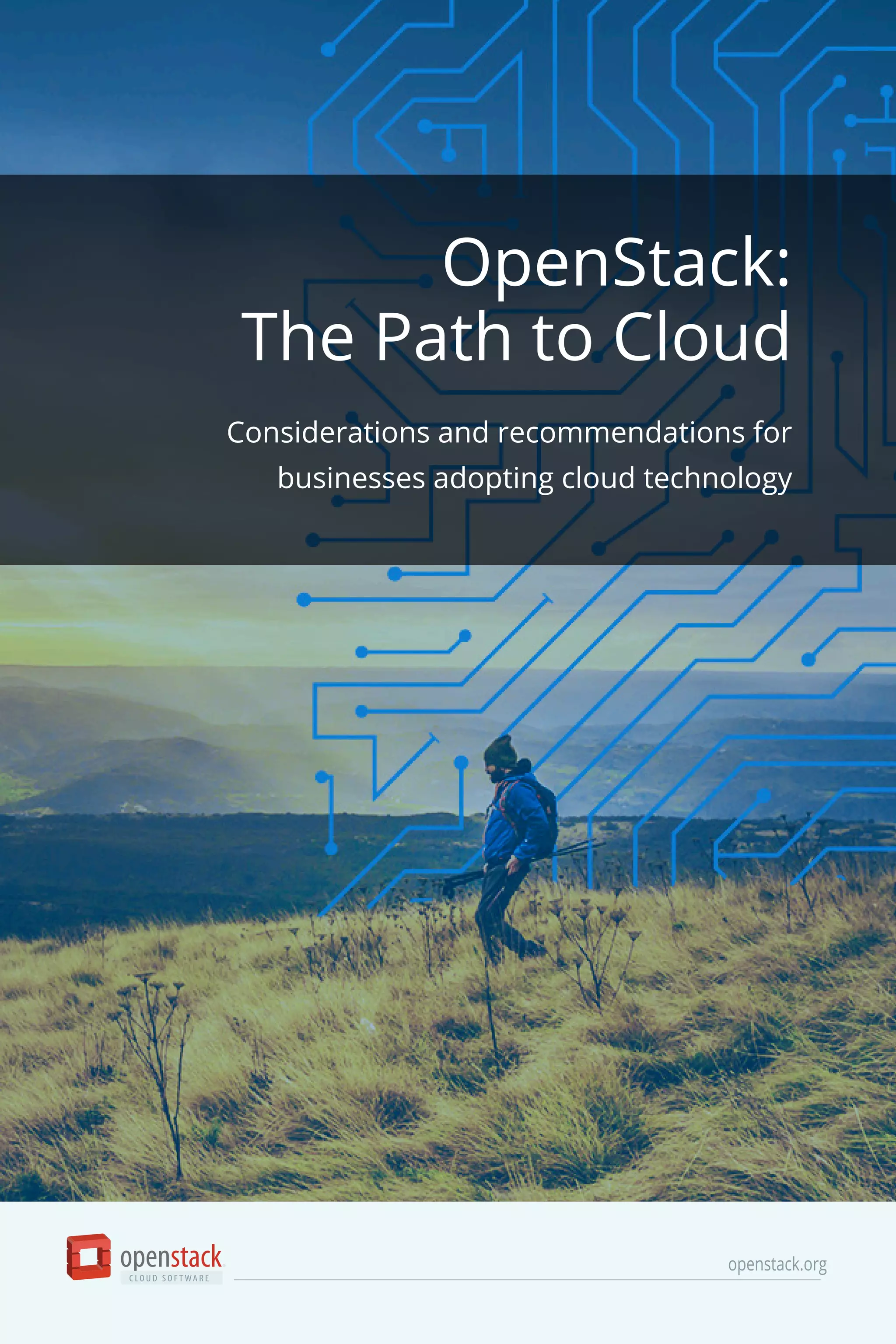
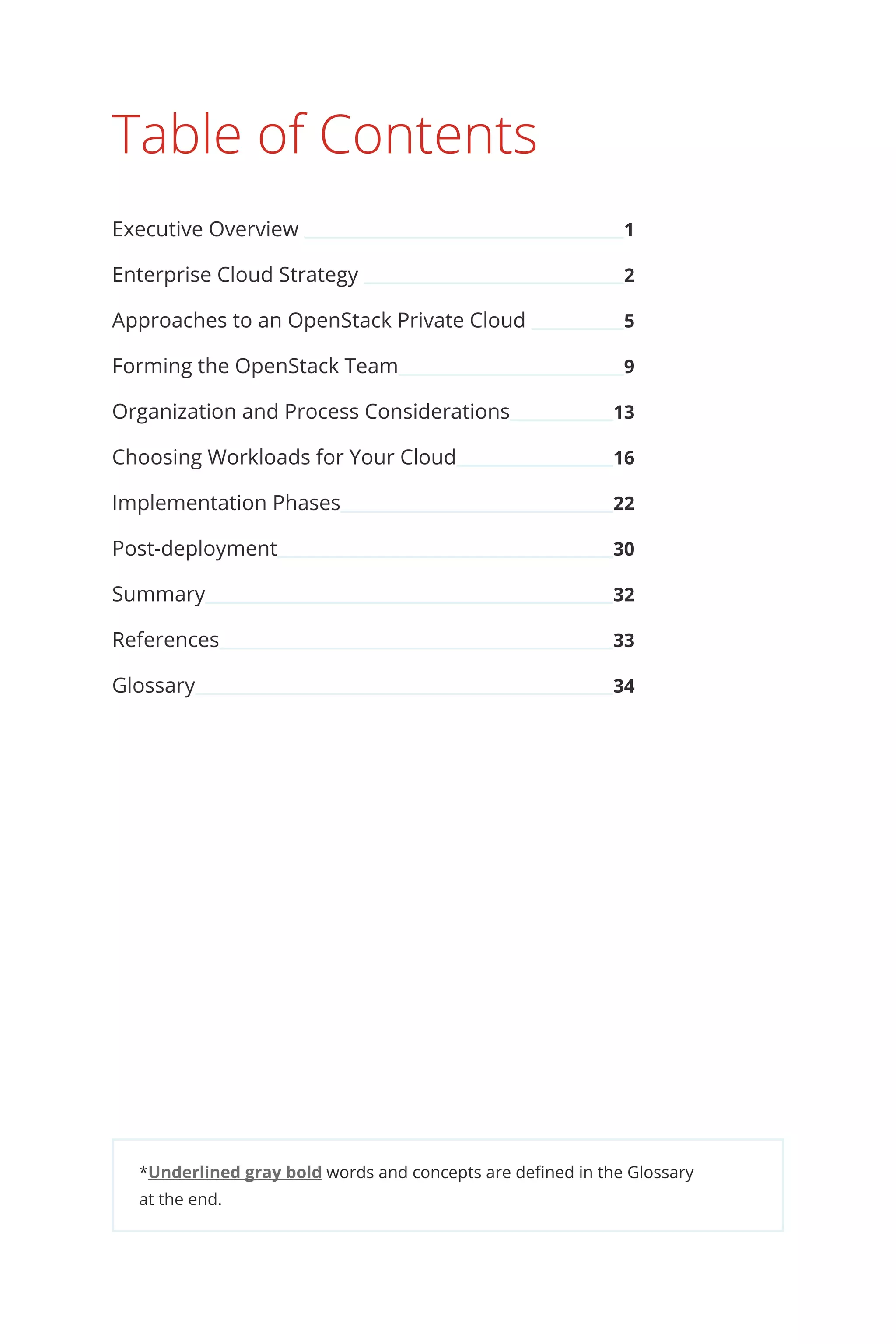
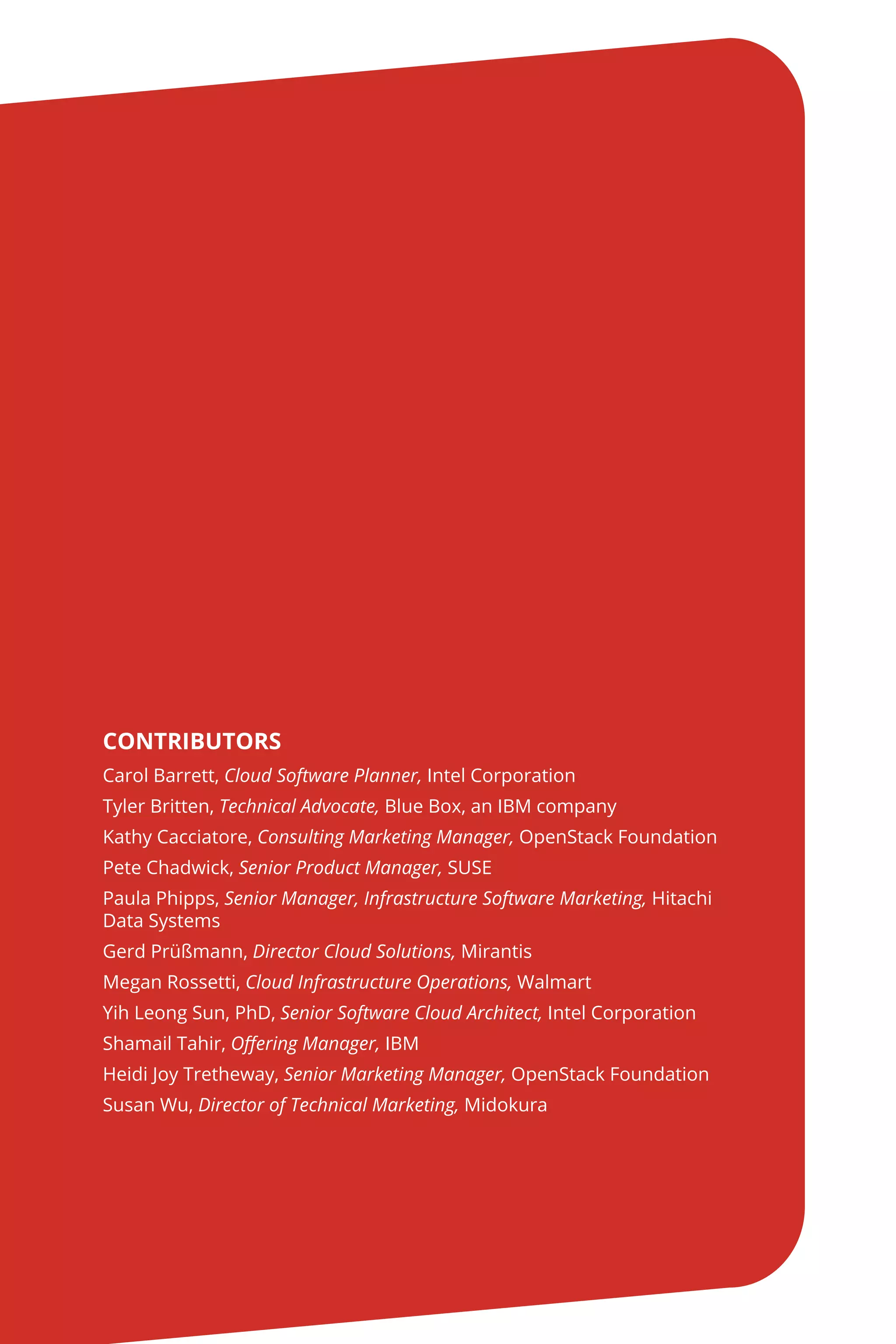
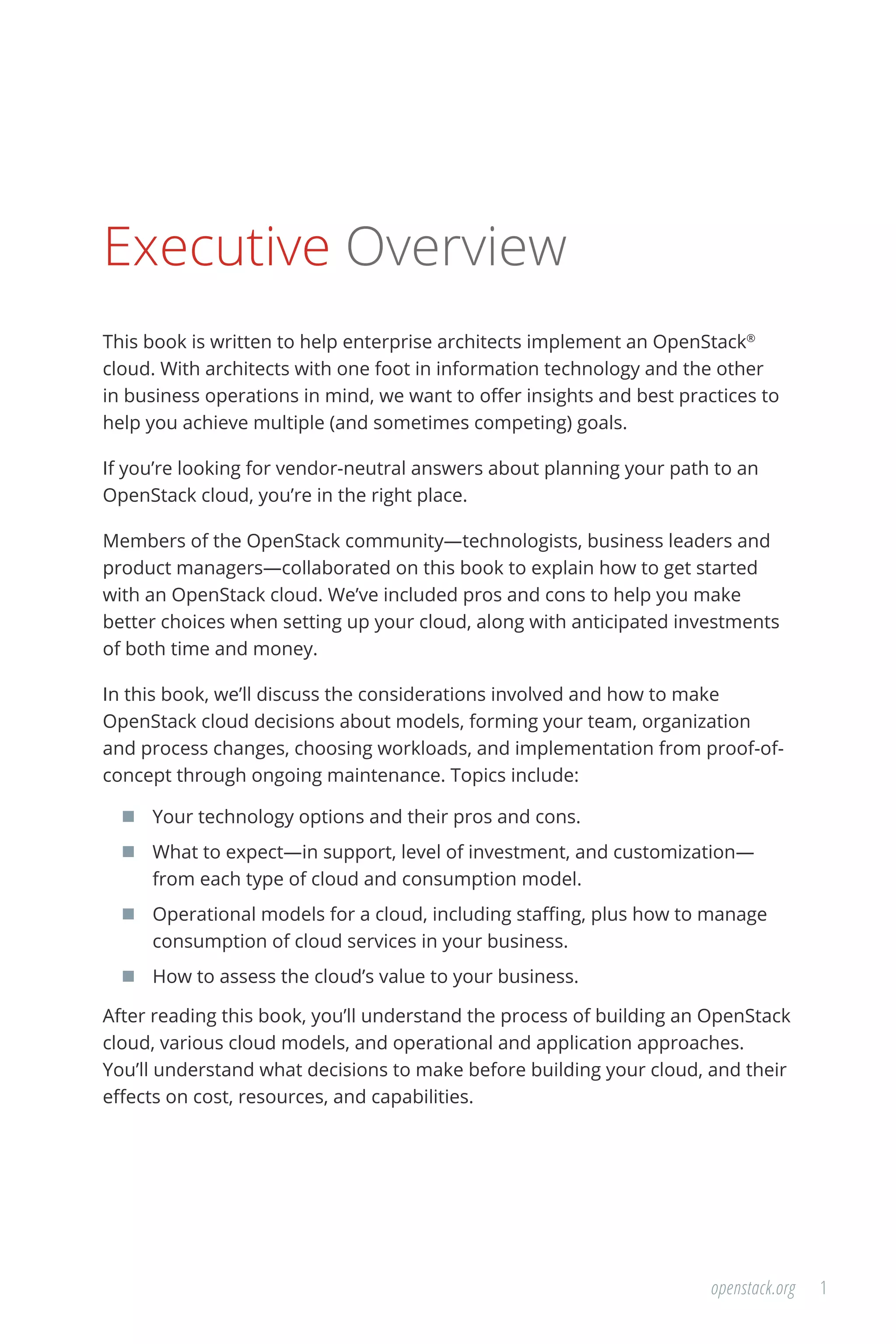
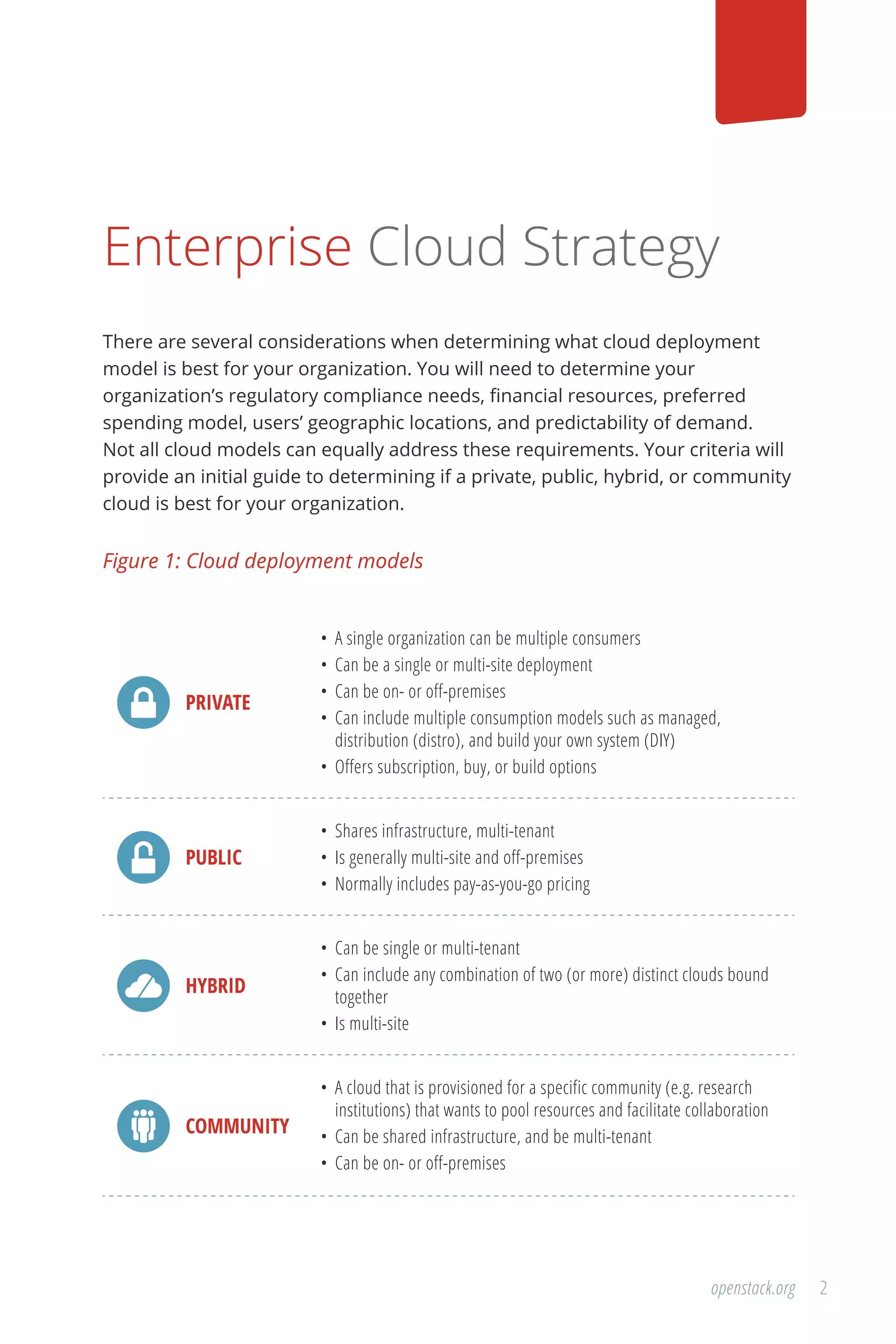
![3openstack.org
The importance of the considerations will vary based on your organization’s
objectives and use cases for the cloud.
Before we begin to discuss the considerations, let’s briefly review various cloud
deployment models. For more information about these cloud deployment
models, check out the National Institute of Standards and Technology (NIST)
definition of cloud computing1
.
Regulatory and compliance requirements
Your regulatory compliance needs might dictate your choice of a cloud
deployment model. Not all models meet the needs of organizations with
industry-specific regulations, such as PCI, HIPAA, data sovereignty, etc.
Private, hybrid, and community models offer the most flexibility for
implementing the necessary controls to meet your compliance needs. Some
public cloud providers have specialized cloud regions for industry-specific
compliance needs.
Initial investment amount
Financial resources can influence your decision about which cloud deployment
model is right for your organization. Generally, private and hybrid clouds
have higher initial costs than public or community clouds. Public clouds use
shared infrastructure, which removes much of the startup costs and typically
offers “pay-as-you-go” pricing. Similarly, community clouds have lower entry
costs than private or hybrid clouds because the cost is divided among multiple
organizations. Private and hybrid clouds are generally offered by a single
organization, which require you to purchase or lease all components.
Some providers offer subscription pricing for private or hybrid clouds
depending on the consumption model [See the Approaches to an OpenStack
Private Cloud chapter].
Geographic access patterns
Your cloud services should be available to your consumers whether they are
internal or external to your organization. However, the number of locations
and types of consumers can impact your cloud deployment model selection.
For example, if you don’t have data centers in all the locations near your
consumers, you might leverage the hybrid cloud model to have private cloud(s)
in your own facilities augmented by public cloud regions in other areas.
If you have regulatory or latency/performance constraints that prohibit using
a regional private cloud across the globe, then a public cloud could allow
you to maintain geographic proximity at a lower overall cost. For example, a
company that has presence in Australia but lacks a local data center in the](https://image.slidesharecdn.com/openstackthepathtocloud-160503155856/75/OpenStack-The-path-to-cloud-6-2048.jpg)
